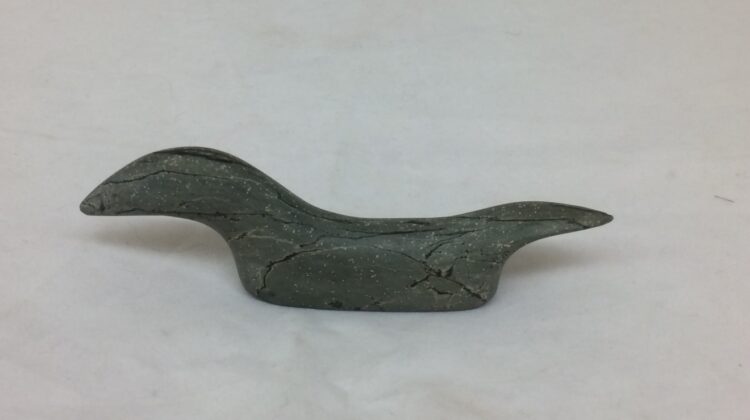Native American projectile points have been made in the Americas from the time of the earliest Paleo-American cultures through the 16th century. The points in these collections are made of local stone in a variety of colors; the majority of the points are made of Burlington chert, but there are also points made of Mozarkite chert and jasper chert. Native Americans also … [Read more...] about Midwest Native American Projectile Points: Researched by Paige Whitcomb and Chaney Jewell
Kachina figures are made by many different Native cultures of the American Southwest region, but they are believed to have originated with the Hopi culture. The more geometric, compact, and simplified Kachina figures, or Tihu figures (plural Tithu), are traditional sculptures that depict Hopi spirits and serve as educational, religious objects; these figures are carved by the … [Read more...] about American Southwest Kachina Figures: Researched by Hannah Robinson
The stone artifacts in this exhibit date from the Paleo-American period (12,000 BCE or earlier–8000 BCE) to the Woodland period (1000 BCE-1000 CE), and they represent the development of these peoples from hunters, fishers, and gatherers into civilizations that were experimenting with agriculture, but who continued to fish and hunt in the lush valleys and forests of the Eastern … [Read more...] about Ancient Native American Stone Artifacts: Researched by Hannah Harmon
Molas are colorful, hand-sewn textiles that are produced by the female artisans of the Kuna culture of the San Blas region of Panama. The earliest molas are said to have developed after the arrival of Spanish missionaries in Central America, when women were encouraged to cover their bare upper torsos. In response, the Kuna women created blouses made of imported cotton cloth … [Read more...] about The Molas of the Kuna Culture: Researched by Tana Redman, Codee Ratliff, and Elizabeth Ferguson
This vessel is an excellent example of the skilled art pottery made by the artisans of San Juan de Oriente, Nicaragua. These vessels strongly illustrate the Mestizo (mixed European and indigenous) heritage of the region; the vessels are made using traditional terra cotta clays, but formed using the imported Spanish method of throwing the vessel on a potter’s wheel. The vessels … [Read more...] about Sgraffito Vessel with Four Swimming Turtles: Researched and Reproduced by Katelynn McGuire





